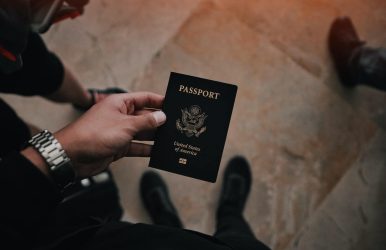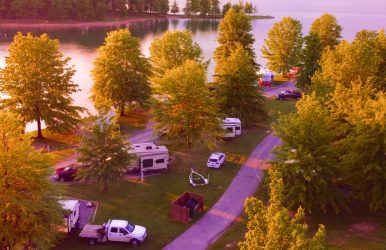5 Tips To Protect Your Passport While Travelling Abroad
BY Abdul Aziz Oct 4, 2021
Any visitor's worst nightmare is losing their phone, wallet, or, worse their passport in an unfamiliar location. You have no prior knowledge of the country, its inhabitants, or its language. And if you lose your essentials while traveling overseas, what was supposed to be a relaxing vacation becomes a full disaster. Losing your passport is the worst thing that can happen to you. Because it raises the most fundamental question: how will you get back home? But have no fear: every problem has a solution, and this one is no exception. So, if you ever find yourself in a situation like this, try not to freak out. Inhale deeply and exhale slowly. And once you've searched every nook and cranny and are certain it's gone, there are five basic things you should do if your Indian passport is misplaced while traveling abroad. File An Official Report For Lost Or Missing Passport To begin, locate the nearest police station and register a missing or lost passport complaint. Any travel insurance policy must include this step. It's also crucial information that you should bring to the attention of the embassy or consulate. However, keep in mind that this may not always expedite the procedure of apply for a new passport. Nonetheless, it is critical. A police report can also help you with embassy formalities like obtaining an emergency certificate or a new passport. Visit The Nearest Indian Embassy Or Consulate Next, go to the Indian embassy or consulate in your area. They will assist you in obtaining a new passport. Make an appointment ahead of time by calling ahead. It's also crucial to notify the embassy if your passport has been stolen. Find the one closest to you and acquire their phone number and email address so you may communicate with them. Keep All The Supporting Documents Ready As your appointment with the Indian embassy approaches, it would be preferable if you prepared the necessary documentation to replace your passport. When you visit the embassy, you will be required to submit some documents in addition to the application. It will take around a week to replace a new passport. For this, you must submit the following documents: Personal application stating the need for the new passport's prompt issuance Photocopy of lost passport (front and back pages), passport lost or stolen police report Passport size photos (4 to 6) Photocopy of air tickets and visa You also don't have to wait for a new replacement passport if you need to return to India right away. Simply fill out an application for an Emergency Certificate. This is a travel document that can only be used once. It allows an Indian citizen who has misplaced their passport to return to India without difficulty. You'll need to get your visas stamped anew for both of these alternatives. The following documents are required to apply for an Emergency Certificate: Application by giving an EAP-2 form Passport size photos (4 to 6) Photocopies of passport (Front and back pages) Police report for a lost or stolen passport. Appy For Re-Issue Of Your Visa If you lose your passport while traveling abroad, whatever visas you may have will be lost as well. As a result, you can reclaim your visa by going to the nation's embassy that issued it in the first place. For this process, you'll need a copy of your old visa as well as the police report that was submitted. It would also be beneficial if you had your new replacement passport. Reschedule Your Flight & Claim Travel Insurance On Return If your passport is lost or stolen, you will be unable to travel outside of the foreign nation until you acquire a new passport or an Emergency Certificate. As a result, you may need to reschedule your flight if necessary. Call your airline and let them know what's going on. The sooner you notify the airlines, the more likely you will avoid wasting your money on rescheduling your journey. Before going abroad, it's always a good idea to get travel insurance. If you've done all of this, make a claim for your travel insurance when you get back to India. Make a claim for a missing passport to redeem your insurance. Contact your insurance company as soon as possible, and preserve the police report and any other documents connected to the expenditures paid as a result of the loss of your passport on hand. So, if you lose your passport or it is stolen while on vacation overseas, these are the five things you must do. Above all, remember to be cheerful, take a deep breath, and avoid panicking. If you keep your cool, you'll be able to get through this scenario faster and with less stress. Read Also: Rejection Of China Tourist Visa In Atlanta – Some Possible Reasons How To Book A Driving License Slot Online?











